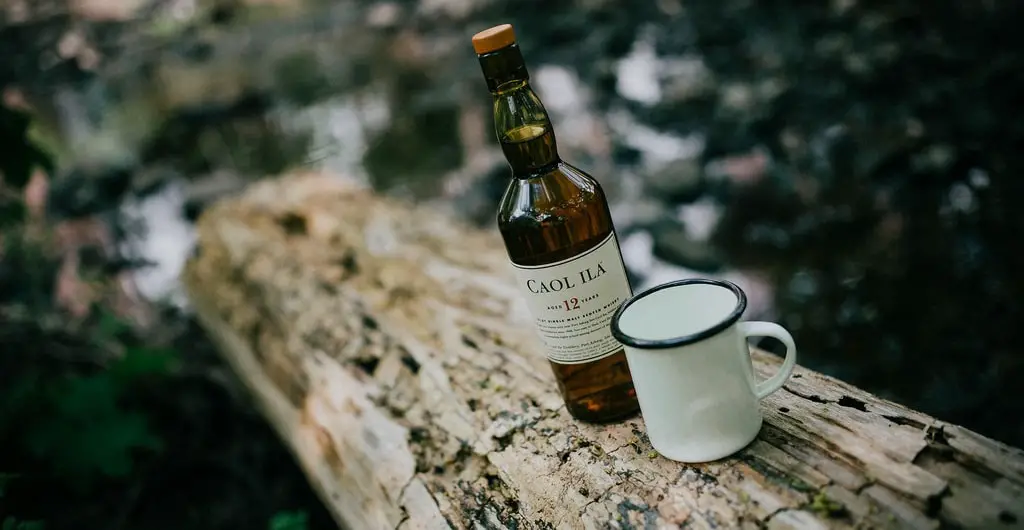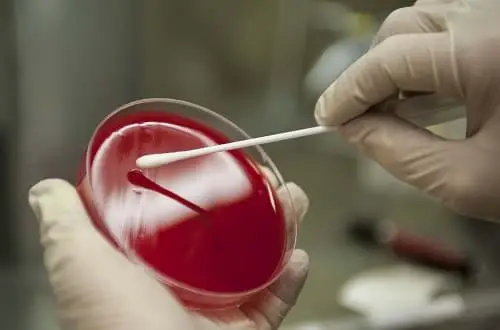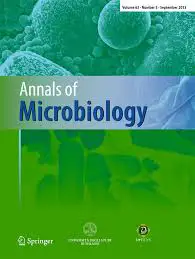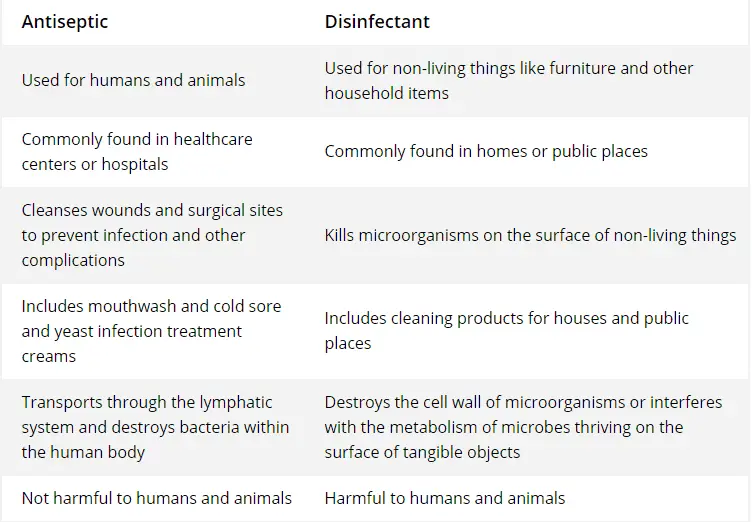At the end of my hiking trip to the West Highland Way in Scotland, I came across a traveling group from Ireland. During the night we had a pleasant time together, learning to know each other’s cultures a little better. They have brought whiskey to their journey, and once they heard I’m a medical student they asked me: “is whiskey a good antiseptic?” I knew alcohol could kill bacteria through denaturation, although I didn’t know how efficient that would be when you use whiskey – that was when I started to research.

Yes, whiskey is a good antiseptic since it has a sufficient alcohol concentration which can damage most of the bacterias’ membrane and stop them from functioning.
To prove my point, I will present you here three different articles which showed it from different angles – written by Cecil Adams, Annals of Microbiology and David Blair, M.D.
Later on, I will elaborate on their research and present you with the results. Also, I will show you how exactly alcohol kills bacteria and how vodka might also do the trick.
To get a better perspective, I will explain to you what are the differences between antiseptic and disinfectant agents – terms you’ve probably heard in your own research.
Cecil Adams Answers
These days antiseptics remedies are quite common, turning whiskey a relatively ‘primitive’ choice. Therefore, finding a decent study that was conducted in modern times was a challenging task; still, I was able to find one interesting experiment from 2011.
Cecil Adams, the pseudonymous author of The Straight Dope, replied to a question regarding that topic in an article he called: Can liquor be used as an emergency antiseptic?.
In there, he grew bacteria cultured from his assistant’s body, Una, who hasn’t washed for two days and got mixed with cattle outdoors. On his experiment, Adams took samples from four damp areas of Una’s body: back of the knee, stomach, sole and groin.
Then, he washed the areas with water, red wine (12%), blended scotch (40%) and Everclear (95%) and reviewed the beverages effect on the colonies growth.

The areas that were washed with whiskey had a 50% reduction in bacterial size and quantity.
Everclear had the most significant impact with a 75% reduction – still, consider that the alcohol concentration is more than double than in whiskey.
On his conclusions, Cecil sums up: “Whiskey, the favored antiseptic for wounded cowboys out on the lone prairie, really is reasonably effective. Let’s hear no more about urban legends, med school know-it-alls — this is rural fact.”
Annals of Microbiology
Annals of Microbiology is the official journal of the University of Milan and had published countless articles in the field of microbiology.
When I found an article regarding our topic coming from this journal – I was quite thankful, mainly because the information it provides is reliable.

In their study, the researches gathered random ice cubes from domestic areas, restaurants, and industrial facilities and checked the presence of bacteria.
Naturally, the ice cubes differed in their type of bacterial colonies and their characteristics, since they were collected from different places.
Still, the conductors provided us with one exciting finding – when alcoholic drinks were added to the ice cubes, the number of bacteria decreased significantly.
They haven’t mentioned the exact percentage, although they have said this: “…the results showed a consistent reduction of bacterial risk due to alcohol, CO2, pH and antibacterial ingredients of vodka, whiskey, Martini, peach tea, tonic water, and coke.”
Whiskey as an Antiseptic Dressing in Surgery
Remember when I said that modern studies regarding whiskey usage are hard to find? Well, things were a little different in the past century.
Apparently, applying whiskey was part of surgeons practice to disinfect wounds post surgery. On my research, I came across an interesting article, written by David Blair, M.D. in 1980.
In his writings, David describes three case studies in which he used whiskey as an antiseptic – all injuries involved the palms. Blair had followed his patients and noticed that the wounds were free of infections and developed no discharge what so ever.
There were more cases in which he used whiskey, most of them in treating bedsores (which were very common in these times). Again, Blair had seen great results and fewer infectious complications.
How reliable is this article? It’s hard to tell, mainly because there is no comparison group which wasn’t treated with whiskey. Still, this is one of the clear examples that show whiskey might have a positive antiseptic effect.
How to Kill Bacteria Using Whisky?
So you are outdoors, having fun with your friends when you, unfortunately, get injured. If you’ve brought whiskey along the way, the three articles above indicate you should take advantage of it to disinfect your wound.
To make sure you do it correctly, I’ve gathered the instruction given by David Blair, M.D in the previous article –
- Wash the wound with a significant amount of whiskey to make sure that you get rid of dirt and blood clots.
- Stop the bleeding with stitches; if you have someone with medical practice and anesthesia, it is essential that you use them since the bleeding would wash off the whiskey once you apply it. If you don’t have any of these – compress the wound with a sterile bandage until the bleeding had stopped.
- Soak another clean bandage with whiskey and apply it on the wound. Make sure that the cloth is neither too wet or too dry – excessive liquids would slow the healing process.
- Let the bandage sit as it is for three days – do not replace it on this point; after this, switch it every day (or every second day – depending on the circumstances). The new bandages should feature whiskey in them as well – again, not too dry nor too wet.
How Does Alcohol Kill Bacteria And Viruses?
Alcohol kills bacteria through denaturation – a process in which proteins or nucleic acids lose their structure. What special about alcohol is that it attracts both fat and water substances.
That quality is unique since the two feature very distinct characteristics and other chemicals usually bond to merely one of them.
Well, that particular quality is what allows ethanol molecules to bind to the bacteria membrane and ruin it (the layers contain both fat and water).
When the alcohol harms its membrane, it is just a matter of time before the bacteria gets killed, since the proteins inside naturally leak out and the pathogen loses its functionality.
Viruses feature a different membrane which is called viral envelope. It differs from hosts/bacteria membranes and harder to destroy – still, alcohol could harm them as well.
What Percentage of Alcohol Kills Bacteria?
To answer this question, we should clarify the difference between bactericidal and bacteriostatic substances.
When applying alcohol on a wound, two things might happen – you could stop the existing pathogens from growing further, or you can kill them entirely.
When you prohibit further growth, you actually use a bacteriostatic agent. On the contrary, when you eliminate the contaminator – you are taking advantage of a bactericide substance.
At low concentrations, such as found in beers – you won’t be able to kill bacteria, although you will be able to stop it from growing.
That could be on your favor if you wish to buy yourself some time before you can get more professional assistance.
Alcohol becomes bactericidal on higher concentrations – between 60 and 90% (as the one found in laboratories and hospitals).
Whiskeys differ in their alcohol percentage; however, some of them will be able to kill bacteria (especially the strong ones).
What’s The Difference Between Antiseptics And Disinfectants?
When you read on the internet different ways to clean things and get rid of contaminators, it is very likely to come across the two terms. Antiseptics and disinfectants may pop up the same associations, although they do differ in a few ways.
What is Being Cleaned
Antiseptics focus on living organisms – humans and animals. As long as the cleaning substance gets rid of bacteria found on/in living creatures – it will be named an antiseptic.
On the other hand, when you intend to clean inorganic objects, such as areas around your house – you will be using disinfectant cleaning materials.
The Influence on The Human Body
This one could also be referred from the previous difference between antiseptics and disinfectants.
Since the first primarily treat living organisms, it has a healthy and positive impact on the human body. On the other hand, disinfectants could harm us, and therefore we are told to use it with some protection.
For a better understanding, I got you a summarizing table from Quora which provides some other differences between the two:

Can You Use Liquor to Clean a Wound?
Basically, what kills bacteria is the alcohol in your drinks – therefore, it is natural to assume liquor could do the same. The information regarding that particular drink is limited, so a reliable, proven verdict is hard to find.
Still, I have the feeling you should not use sweet liquors to clean your wounds – and I base my point of view on the first article I’ve mentioned in this post.
Among the conclusions written by Cecil Adams, he said that the areas which were treated with wine got even worse: “Wine washing resulted in the biggest and most abundant colonies, even more than in the raw sample.”
That got me thinking – what was the big difference and why was wine inferior to whiskey? I haven’t done any research about it, although I can assume that the sugar it contains and the relatively low alcohol concentration were the key factors.
Therefore, I wouldn’t use liquors to clean wounds – mainly because they include a high amount of nutrition that could be consumed by bacteria.
What About Vodka As Antiseptic?
The research was also limited here, although many bloggers write in favor of using vodka as antiseptic. Vodka usually features a high alcohol concentration – approximately around 40%.
Therefore, in some cases, it could act as a bactericide and kill bacteria on the top of stopping it from growing further.
In fact, one recommendation stated that you could also use vodka as a disinfectant – to clean your house, for instance. To do so, you can make yourself a homemade spray as described in this article.
Also, vodka features relatively lower levels of sugar (compared to liquor or wine), and the pure types have even absolutely none. Therefore, I believe, that particular drink wouldn’t contribute to bacterial overgrowth as the wine did in Cecil’s experiment.
Is Alcohol a Good Antiseptic?
Alcohol was proven to be an excellent antiseptic for decades – people used it even though they weren’t familiar with its mechanism of action.
Still, it could lose its impact when you exaggerate and use it wrong. The critical factor here is the amount of alcohol you are using, which could also be related to its concentration.
When you use a 100% percent alcohol, you might get worse results than using 70% since the alcohol tends to coagulate outside the bacteria’s membrane.
When that happens, the firm, bonded molecules won’t allow further ethanol penetrate the pathogens layers and you get a reduced effect.
The same thing happens when you use an excessive amount – as explained in the last article I’ve mentioned by David Blair.
Also, some bacteria and viruses feature a more resistant membrane, and in those cases, alcohol wouldn’t do much.
Any Other Camping Disinfection Techniques?
When you go camping – the one essential method you have to know is boiling water to kill bacteria, viruses, and protozoa.
Water is a limited resource when you are spending your time outdoors, especially on prolong adventures. Therefore, I recommend that you learn how to make water from unreliable sources into a healthy consuming substance.
To do so, I suggest that you read my article regarding the question: “How long does water need to boil to kill bacteria?” I’ve gathered there some useful information and showed the right way to purify water so you can drink it safely along the way.
Also, I’ve collected there a few other techniques for water purification, so you may choose the one which suits you best.
Conclusions
If you’ve brought whiskey on your hiking/camping adventure and got injured – you should take advantage of it since it is a quite good antiseptic.
First, make sure that you clean the clotted blood and dirt – you can use the beverage itself for that purpose. Then, soak a bandage with the alcoholic drink and apply it on your wound for 3-4 days without changing it.
If you happened to carry wine and liquor – I wouldn’t try cleaning my wound with it, since the sugar it contains may haste bacterial growth.
Alcohol kills bacteria through protein denaturation; once the ethanol breaks down its membrane, the inner content leaks out and the pathogen dies.
Still, that isn’t the case with low concentration drinks, such as beer, since in this case, the alcohol would merely stop the bacteria from multiplying (although it could be a reasonable bridge to a further professional treatment).
Also, you shouldn’t use higher concentrations than 70% or a vast amount of liquids since the ethanol would coagulate and lose its impact.
I hope my article helped you to deal with your issue. If you have any new insights regarding that topic – let me know all about them by leaving a comment below!

